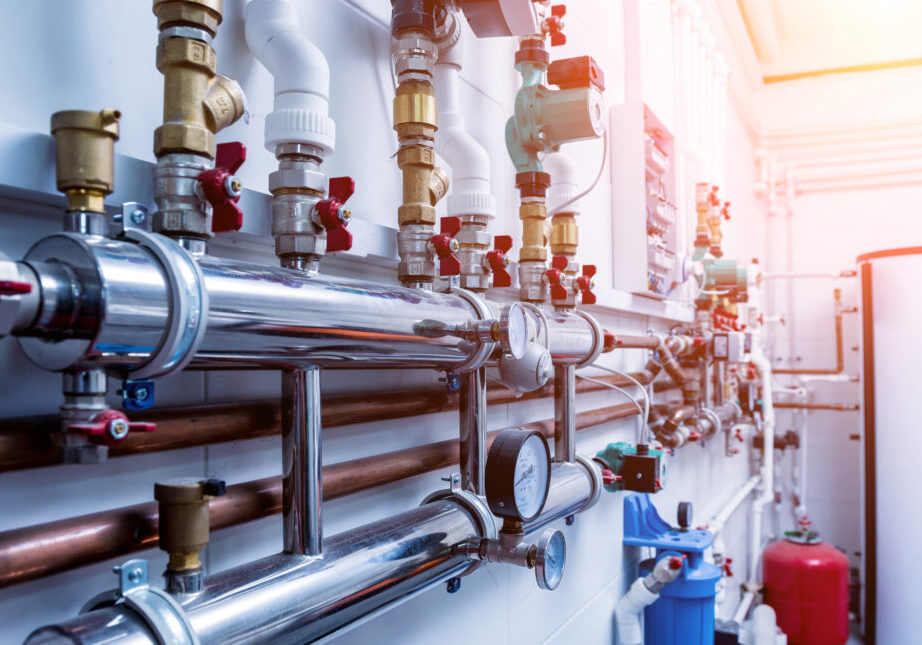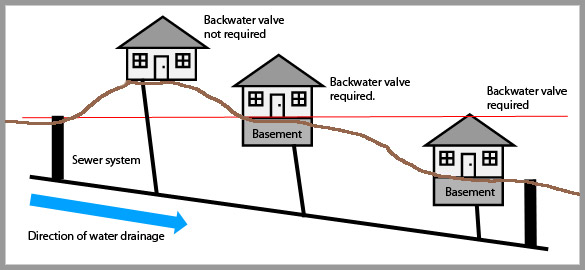The Core Parts of Your Home's Plumbing System
The Core Parts of Your Home's Plumbing System
Blog Article
We've encountered this great article on Anatomy of a House: Understanding the Components directly below on the web and felt it made sense to relate it with you on my blog.

Understanding how your home's pipes system functions is vital for each house owner. From supplying clean water for drinking, cooking, and showering to safely removing wastewater, a well-kept plumbing system is essential for your family's health and comfort. In this thorough guide, we'll check out the elaborate network that composes your home's pipes and offer tips on upkeep, upgrades, and managing typical issues.
Introduction
Your home's pipes system is more than simply a network of pipelines; it's a complicated system that guarantees you have access to clean water and reliable wastewater elimination. Knowing its parts and just how they collaborate can help you avoid pricey repair services and guarantee every little thing runs efficiently.
Standard Parts of a Plumbing System
Pipelines and Tubing
At the heart of your pipes system are the pipelines and tubing that lug water throughout your home. These can be made of numerous products such as copper, PVC, or PEX, each with its benefits in regards to resilience and cost-effectiveness.
Components: Sinks, Toilets, Showers, etc.
Fixtures like sinks, commodes, showers, and bathtubs are where water is utilized in your home. Recognizing how these fixtures attach to the plumbing system aids in diagnosing problems and intending upgrades.
Shutoffs and Shut-off Points
Valves control the circulation of water in your pipes system. Shut-off valves are crucial throughout emergencies or when you require to make repair services, allowing you to separate parts of the system without disrupting water circulation to the entire home.
Supply Of Water System
Key Water Line
The major water line connects your home to the local water system or a personal well. It's where water enters your home and is distributed to numerous components.
Water Meter and Stress Regulator
The water meter actions your water use, while a pressure regulatory authority ensures that water streams at a risk-free pressure throughout your home's plumbing system, protecting against damage to pipelines and fixtures.
Cold Water vs. Warm water Lines
Recognizing the distinction between cold water lines, which provide water directly from the major, and hot water lines, which bring heated water from the hot water heater, assists in repairing and preparing for upgrades.
Drain System
Drain Pipes Pipes and Traps
Drain pipes bring wastewater far from sinks, showers, and commodes to the sewer or septic system. Traps stop sewage system gases from entering your home and additionally catch debris that might trigger blockages.
Ventilation Pipes
Ventilation pipes enable air into the drain system, protecting against suction that could slow drainage and trigger traps to vacant. Correct air flow is crucial for preserving the stability of your pipes system.
Importance of Proper Drainage
Guaranteeing proper drainage prevents back-ups and water damages. Consistently cleaning drains pipes and keeping traps can stop pricey repair work and expand the life of your pipes system.
Water Heating Unit
Sorts Of Water Heaters
Water heaters can be tankless or traditional tank-style. Tankless heating units warmth water on demand, while storage tanks save warmed water for immediate use.
Upgrading Your Plumbing System
Reasons for Upgrading
Upgrading to water-efficient fixtures or replacing old pipelines can enhance water quality, reduce water costs, and boost the value of your home.
Modern Pipes Technologies and Their Advantages
Discover innovations like smart leakage detectors, water-saving commodes, and energy-efficient water heaters that can save money and decrease environmental influence.
Expense Considerations and ROI
Compute the ahead of time expenses versus long-term cost savings when thinking about plumbing upgrades. Many upgrades spend for themselves through lowered energy expenses and fewer repair work.
How Water Heaters Attach to the Plumbing System
Understanding just how water heaters attach to both the cold water supply and warm water distribution lines helps in detecting problems like insufficient warm water or leaks.
Maintenance Tips for Water Heaters
Consistently flushing your hot water heater to eliminate debris, examining the temperature level settings, and evaluating for leakages can extend its life-span and improve power effectiveness.
Usual Plumbing Issues
Leakages and Their Causes
Leakages can happen due to maturing pipelines, loosened installations, or high water pressure. Addressing leakages promptly protects against water damages and mold development.
Clogs and Clogs
Blockages in drains and bathrooms are usually triggered by flushing non-flushable products or a build-up of grease and hair. Making use of drain screens and bearing in mind what drops your drains can stop obstructions.
Signs of Pipes Problems to Look For
Low tide stress, slow drains pipes, foul odors, or uncommonly high water expenses are indicators of potential plumbing troubles that should be dealt with quickly.
Pipes Maintenance Tips
Regular Examinations and Checks
Schedule annual pipes inspections to catch problems early. Try to find indicators of leaks, rust, or mineral buildup in faucets and showerheads.
Do It Yourself Upkeep Tasks
Straightforward tasks like cleaning tap aerators, checking for toilet leaks making use of color tablets, or protecting subjected pipelines in cold climates can avoid major pipes concerns.
When to Call an Expert Plumbing Technician
Know when a pipes problem requires professional competence. Trying intricate repairs without proper knowledge can lead to more damage and greater repair costs.
Tips for Reducing Water Usage
Basic routines like repairing leaks immediately, taking shorter showers, and running full tons of washing and dishes can save water and lower your utility bills.
Eco-Friendly Pipes Options
Take into consideration sustainable plumbing materials like bamboo for floor covering, which is durable and environment-friendly, or recycled glass for counter tops.
Emergency situation Readiness
Steps to Take During a Pipes Emergency
Know where your shut-off valves lie and just how to shut off the supply of water in case of a burst pipeline or major leakage.
Importance of Having Emergency Situation Calls Helpful
Keep contact info for regional plumbings or emergency services readily available for fast feedback during a plumbing situation.
Ecological Influence and Conservation
Water-Saving Fixtures and Devices
Installing low-flow taps, showerheads, and bathrooms can dramatically minimize water use without sacrificing efficiency.
DIY Emergency Situation Fixes (When Relevant).
Short-lived solutions like making use of air duct tape to spot a dripping pipeline or positioning a pail under a leaking faucet can reduce damage up until an expert plumbing technician shows up.
Final thought.
Understanding the makeup of your home's pipes system equips you to preserve it efficiently, saving time and money on fixings. By adhering to normal maintenance routines and staying informed about modern-day pipes innovations, you can guarantee your plumbing system operates successfully for several years ahead.
HOW YOUR PLUMBING SYSTEM WORKS
Which Pipes Do What?
Blue lines = fresh water supply entering the building Red lines = hot water supply entering the building Grey lines = pipes carrying waste away from the building and venting pipes carrying gases away from the building (through the roof) YOUR MAIN PLUMBING SYSTEMS
There are two main plumbing systems that support your home s basic plumbing needs one that brings clean water into your home, and one that sends dirty water away from your home. Connected to the toilet, bath, shower, and other faucets in your home, these two systems keep your water flowing in the right directions.
ACCESSING FRESH WATER
Fresh and clean water is brought into your home through the main water supply line . Filtered through one pipe, this water is pressured to flow into the various fixtures in your home at any given time.
This water can be sourced from a well located on your property, a pond or river (mostly cottages), or, as in most cases, from the city s municipal water treatment centre. However, it is important to note that water that is untreated, such as the water siphoned from ponds or rivers, may not be safe to drink. Personal water supplies always need to be treated for hardness and contaminants before consumed.
MUNICIPAL WATER SUPPLIES
Improve taste and odour Remove sediment Eliminate hardness Reduce chlorine COLD WATER SUPPLY VS. HOT WATER SUPPLY
Cold water flows into your home or building through the service line, which then distributes hot or cold water to your fixtures. This line is most commonly run through a central column that runs floor to floor. Hot water runs in short and straight pipes as the longer the pipeline, the more heat that will be lost in the transfer. Having shorter pipes also allows residents to access hot water more quickly.
WASTE WATER SYSTEM
Your wastewater system is divided into two parts pipes that send wastewater away from your home and venting pipes that send sewer gas away from your home. Sewage water travels through pipes that flush the water and waste towards local sewers that are operated and managed by your city or town. Most sewer systems rely on gravity to move the wastewater to where it needs to go.
The further away from your toilet or sink, the larger wastewater pipes become. This allows for waste to be disposed of from various parts of your home or business at once without pipe blockages. The angle and flow of these pipes are also essential for keeping your waste pipes clear of build up.
https://harrisplumbing.ca/how-your-home-plumbing-system-works/

Do you really like reading up on Exploring Your Homes Plumbing Anatomy? Create a remark down the page. We will be delighted to find out your thinking about this article. Hoping that you come back again later on. In case you enjoyed reading our page please be sure to pass it around. Thank you for taking the time to read it.
Click Here Report this page